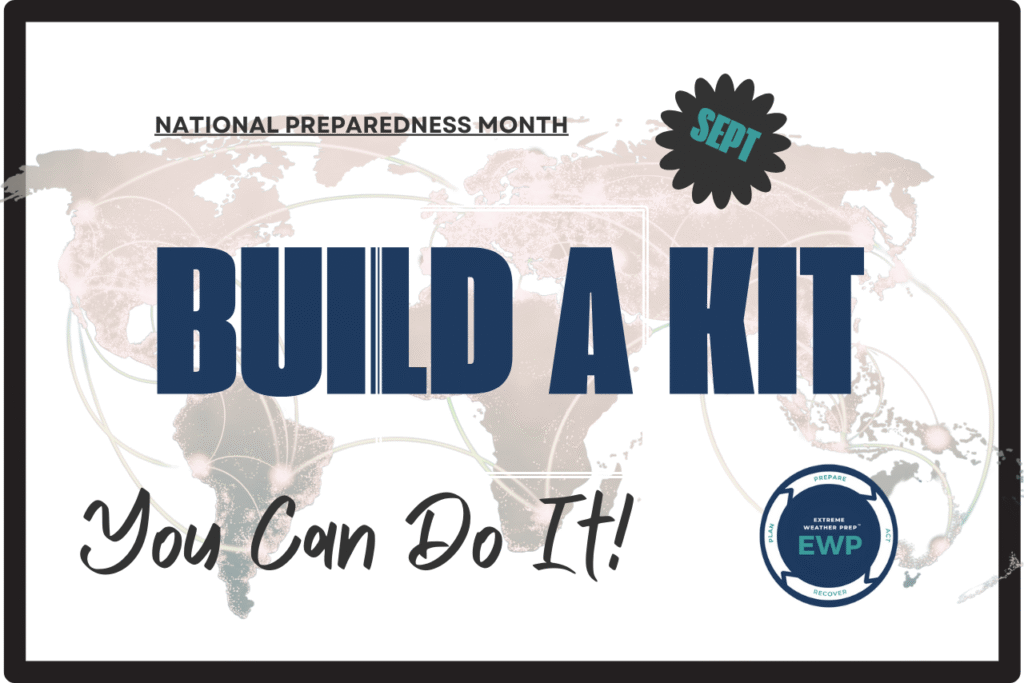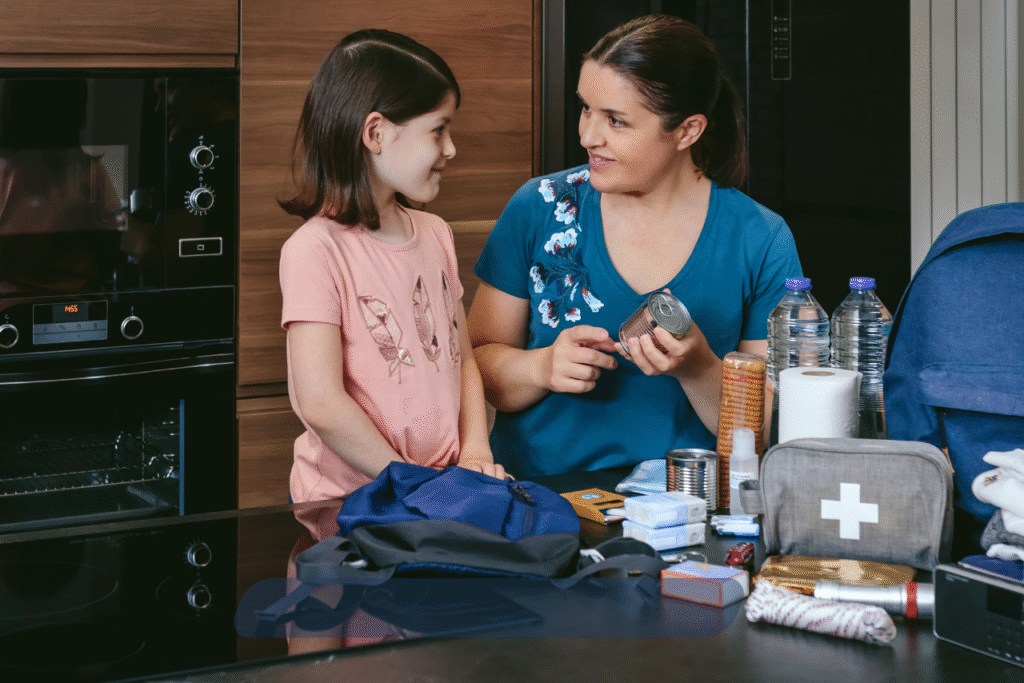Physical Address
304 North Cardinal St.
Dorchester Center, MA 02124
Physical Address
304 North Cardinal St.
Dorchester Center, MA 02124
Key Points

Severe or extreme weather events (floods, landslides, tornadoes, hurricanes, wildfires, etc.) don’t wait for you to be home in sweatpants with a stocked pantry. Emergencies unfold where you are — on the road, at work, or in transit. That’s why building and maintaining a kit isn’t optional; it’s a baseline for weather preparedness.
I learned this lesson firsthand years ago. After a full-day job interview, I was headed to the airport when a Texas-style downpour turned the freeway into a river. Visibility dropped, and water ponding was turning into flooding; we pulled into a gas station for safety. What seemed like a quick stop turned into a four-hour wait. Luckily there was food, water, and bathrooms — but it could just as easily have been a deserted stretch of highway.
That experience shaped how I think about kits: you don’t build them for comfort, you build them to bridge the gap until help arrives or conditions improve. Whether the event is a pop up drenching thunderstorm or a named cyclone.
Sometimes you don’t get three days’ notice. Recent hurricanes have rapidly intensified in less than 24 hours, catching communities off guard. Kits give you a head start and have you ready for weather events where you do not have much time to plan ahead.
| Storm | Year | 24-hr Change | Why it Mattered | Source |
|---|---|---|---|---|
| Hurricane Helene | 2024 | +45 mph | Inland flooding across Tennessee & North Carolina | Congress.gov |
| Hurricane Michael | 2018 | +55 mph | Reached Cat 5 before landfall | NOAA |
| Hurricane Harvey | 2017 | +45 mph | Flooding overwhelmed Houston | NWS |
| Event | Location | Year | Rainfall | Impact |
|---|---|---|---|---|
| Guadalupe River Flood | Central Texas (Kerr/Burnet/Williamson/Travis Counties) | July 4, 2025 | 5–10 in. overnight; >20 in. in some spots; river rose 32 ft in 1.5 hrs | Fatal flooding, multiple deaths, rescues along the Guadalupe River (MySanAntonio, CW3E summary) |
| Flash Floods | Chicago, IL | July 8, 2025 | 5.45 in., with 5.12 in. in ~90 min | Water rescues, flooded viaducts, major disruptions (NOAA/Weather.gov, WTTW News) |
| Flash Floods | New York & New Jersey | July 15, 2025 | 5–7 in. in hours | Subway flooding, road closures, 2 deaths in NJ (Reuters, CBS News) |
| Black Hills Flood | Rapid City, SD | 1972 | 15 in. in 5 hrs | 238 fatalities |
| Cheyenne Flash Flood | Cheyenne, WY | 1985 | 6 in. in 3 hrs | 12 fatalities |
Flooding isn’t just a coastal or hurricane problem. Whether you live in Chicago, the Plains, or the Hill Country — flash floods demand the same level of kit readiness.

According to Ready.gov, a basic kit should include food, water, flashlights, radios, medications, and other core supplies. Store items in airtight plastic bags inside an easy-to-carry container. You may need the kit for evacuation or shelter in place.
But here’s the real key: consider your unique needs.
And here’s the part most people miss: you can either build one large master kit or create smaller modular kits for each person.
A master kit can give a false sense of security if it isn’t broken down into micro-needs: one water allotment, one change of clothes, one pair of socks, one dose of meds per person.
Modular kits make accountability easier: everyone has their own bag, and nothing gets overlooked.
Since you don’t know where you’ll be during an emergency, spread your preparedness:
A kit isn’t “set it and forget it.”
Where I was during Harvey, when entire neighborhoods had to evacuate, the call went out from the high school for comfort clothes — sweatpants, yoga pants — because drenched survivors were being brought into cold, air-conditioned gyms and high schools.
In an emergency, fitted outfits won’t serve you well. What if your weight fluctuated by 5–10 pounds since you built the kit? What matters most is having clothes that adjust to the environment you’re in, let you move, and can fit even when conditions (or your body) change.
Bottom line: maintaining your kit at least yearly is the minimum.
You’ll see plenty of ready-to-buy “emergency kits.” They can save time, but don’t assume they’re complete. One I bought had safety pins inside — not on any FEMA or Red Cross list, but tossed in anyway. Handy? Maybe. Essential? No.
The real issue: do these kits actually cover the basics? Often they don’t. Treat commercial kits as a starter bucket, but audit and add what your household actually needs.
Batteries. While solar chargers and USB power banks are great, batteries are on every FEMA list for a reason. You still need AA/AAA batteries for an emergency because they power a wide range of essential, small, low-power devices like flashlights, radios, etc.
At least yearly — but don’t wait until it all expires. Rotate food and clothing more often to avoid waste.
Yes. Each setting has unique needs. Your home kit can be larger; your car kit must be compact and durable.
Bottom Line: It’s never too late to start building your disaster kit. So if you don’t have one, start yours today!